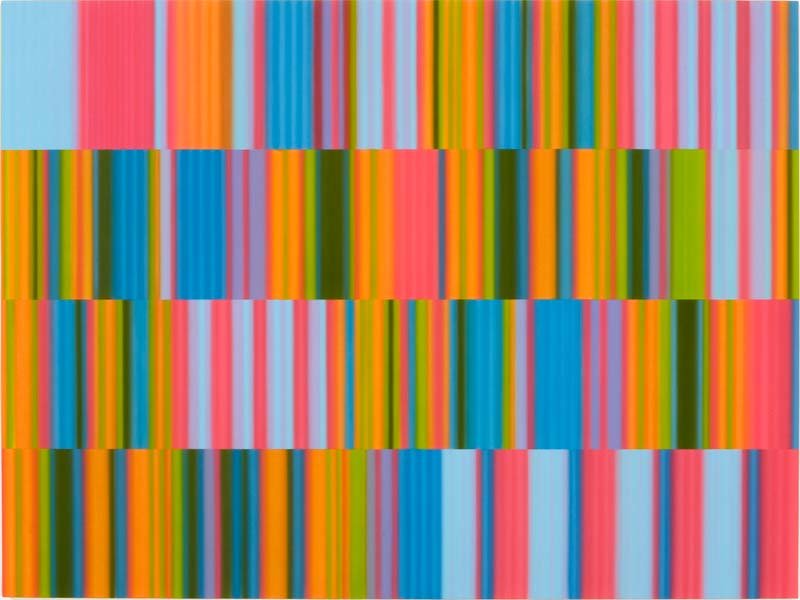Tim Bavington
New Paintings
August 19 - October 2, 2010
Opening Reception: “First Thursday,” August 19, 6-8pm
Artist talk: “Saturday After”, August 21 at noon
Greg Kucera Gallery is pleased to announce our second one-person exhibition of work by Las Vegas painter, Tim Bavington. This show will feature both the stripe paintings he is known for as well as paintings from his recent “Covers” series.
Bavington’s sprayed stripe paintings are typically composed after specific sequences of music. Titling these paintings after rock songs, famous and obscure alike, the artist transposes sheet music into paint by assigning each note a particular color. Each painting’s palette is produced by combinations of the 12 hue color wheel and the 12 tone scale. The paint is applied with airbrush as vertical bands of color. The bandwidth of the painting’s stripes, in turn, is determined by the length of each note within the sequence. From a distance the pattern appears hard-edged, perhaps digitally created, but closer inspection reveals softer, blurred edges, similar to one note from a guitar solo bleeding into the next.
In the “Covers” Series, Bavington gets an opportunity to play the fan to both his rock music and abstract painting influences. In these pieces, the artist approaches the two ways the word “cover” applies to music. Bavington creates blurry visions of album covers for music by some of his Rock & Roll heroes from the last few decades. At the same time, the paintings act as cover versions of work by some of his heroes and influences in Color Field painting. Like the best cover songs, Bavington’s paintings pays tribute to the work that inspires them while also reassembling the elements to create something new and unexpected.
SWEET CHILD OF MINE, 2010
Sythetic polymer on canvas, 34 x 136 inches
Bavington’s abstract style is informed by such diverse experiences as his employment as a freelance illustrator for The Simpsons cartoon series, his study of Bridget Riley’s optical paintings of the 1960s and the art of California conceptualist Ed Ruscha, as well as the sun-drenched desert and nighttime neon of the Las Vegas landscape. He was a student of art critic and professor David Hickey.






